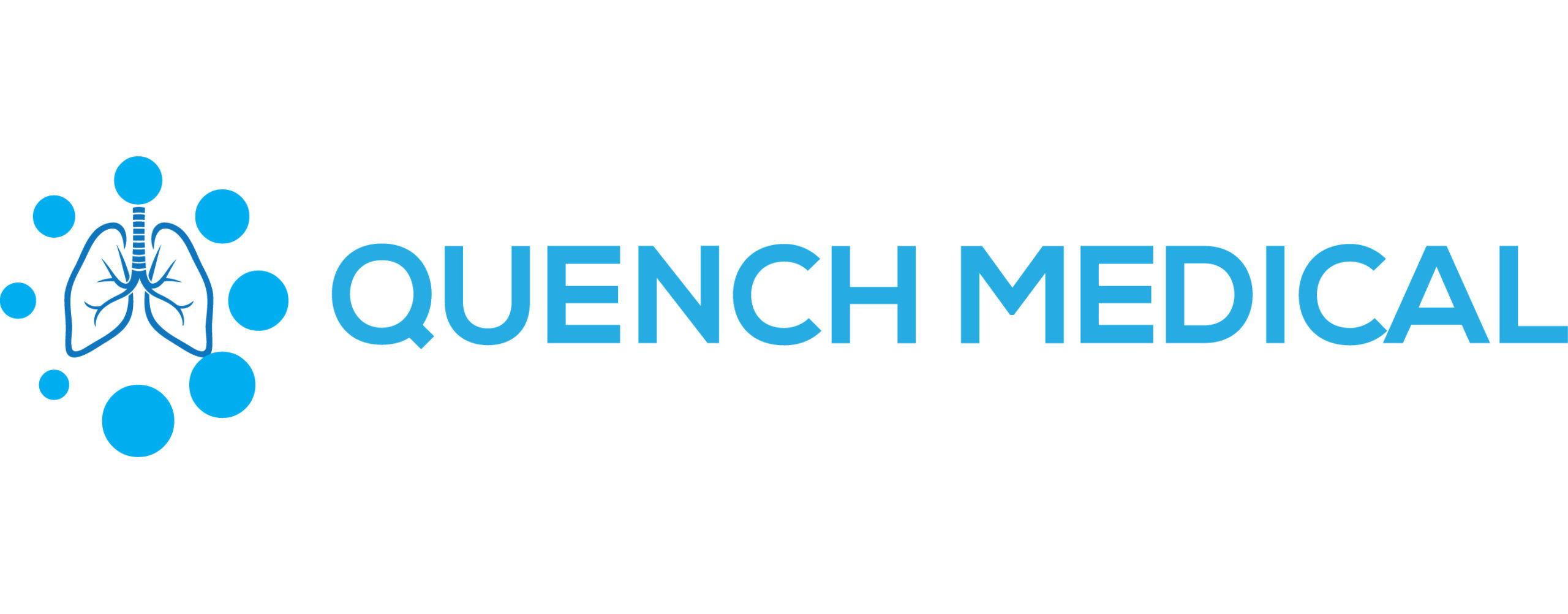Even though intravenous chemotherapy drugs are a standard of care for lung cancer, the treatment has limited efficacy as very little drug reaches the lungs due to blood volume dilution. But what if you could deliver the drugs directly to the lungs? That is the question Quench Medical is answering with its new technology that improves the efficiency of aerosol medicine delivery by as much as 70%. The company’s Founder & CEO, Bryce Beverlin II, PhD, answered our questions about how this technology works, what other disease states can benefit from it, and more.

PM360: Why did you decide to found Quench Medical?
Dr. Bryce Beverlin II: I am passionate about making a difference in the world I live in. I know that’s a wide answer, but I’ve always had a desire to help humanity, and as a physicist I think I have unique skills that can be applied to problem-solving—especially in the medical world.
As a child I suffered from asthma, which is a terrible and frightening disease. While I was generally aware how inefficient inhalers are at delivering drugs into the lungs, I didn’t really know the details until I dug into the clinical literature and examined some of the products in the history of aerosol medicine. I was shocked at how inefficient even modern devices are at respiratory drug delivery.
I then started exploring ways to solve these problems and discovered cutting-edge technologies in respiratory drug delivery at Virginia Commonwealth University (VCU) in the labs of Dr. Michael Hindle and Dr. Worth Longest. They had already spent 10 years and millions of NIH dollars in the development of this technology. When I examined their efforts, I became convinced of the high value. From there, I founded Quench Medical to develop the technology from the significant laboratory work into the clinical space to benefit humans.
 Quench Medical is now focused on lung cancer, so why did you make that pivot from asthma?
Quench Medical is now focused on lung cancer, so why did you make that pivot from asthma?
Quench Medical was awarded an SBIR grant in 2018 for developing the technology for severe asthma. While asthma is certainly a passion of mine and a huge burden on our society, when I began to raise money from individuals, angel groups, and institutional investors like VCs, I found that the more money I was seeking the more pushback I got against asthma. They saw it as an older market. Instead, they suggested trying to prove this technology in something that has more blue-sky opportunity.
We saw the value in that feedback so we pivoted to making an inhaled therapy for lung tumors. All of the chemotherapies are intravenous or oral formulations. But that medication, which is often cytotoxic, ends up creating a huge side effect profile for patients. So, we decided to use our technology to make an inhaled therapy in which the drug is going directly to the lung with high efficiency. Inhaled chemotherapy is a concept that has been studied for a couple decades, but no therapies have reached the market, it seems, due to a lack of efficiency in delivery technologies. For the most part, aerosol medicine is only getting 20% or less into the lung, but we have technology that can raise that to 80% to 90% and avoid putting toxic drugs off-target in the throat.
What makes your technology different?
Existing aerosol medicine technologies produce large particle sizes of around four microns. The aerodynamic properties of particles of that size prevent them from getting deep into the small airways to the lungs and instead are deposited in the mouth, throat, or upper airways.
Conversely, if the particles are too small, they either go all the way to the terminal areas of the lung where you don’t necessarily want them or are buffeted around and get exhaled back out. But the folks at VCU figured out how to grow the particles chemically in a controlled way, by growing the particles during inhalation using the resident moisture of the lung. That way the particles start small enough to bypass the mouth and the throat and get deep, but are growing as they’re travelling through the lung passages in order to deposit efficiently. And we can actually calculate where we want them to preferentially deposit, and manufacture the particles to perform accordingly.
Are you developing your own treatments or partnering with pharma companies that can benefit from your technology?
Currently, we’re developing two products in-house that we hope to launch in 2024. One is an inhaled chemotherapy for treating lung cancer and the other is a corticosteroid for treating severe asthma. Both of those products are using previously FDA approved drugs, so we’re following the 505(b)(2) path to approval. It lowers the clinical study time and cost to market as well as the risk because we already know that the drug is safe and effective. Basically, we’re reformulating for higher efficiency delivery in the case of asthma and reformulating with a different route of delivery in the case of lung cancer.
Quench Medical is also looking for potential strategic partnerships with pharma companies that have a novel molecule they would like to deliver with unprecedented efficiency into the lung. Our technology provides a huge advantage over the competition and could be used to extend the commercial life of existing drugs.
What are your long-term plans for the company?
I envision translating this platform technology across disease states and making major gains in treating severe asthma, COPD, cystic fibrosis, and other lung diseases, including orphan diseases. I really hope I get the opportunity to do that, whether it is by building a strong and lasting company or being acquired by a pharma company that can apply our technology to new products. What I am most focused on is further developing this technology to benefit patients who need better treatments than the current standard of care.







